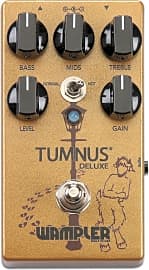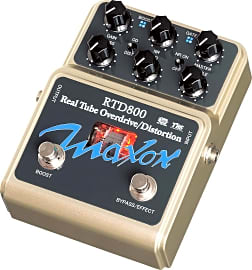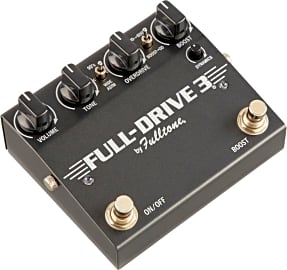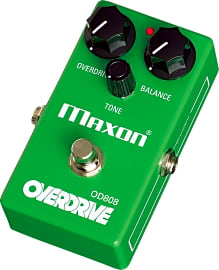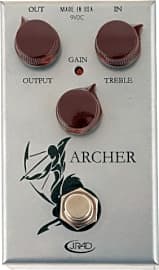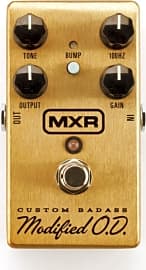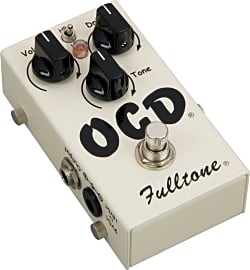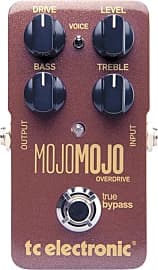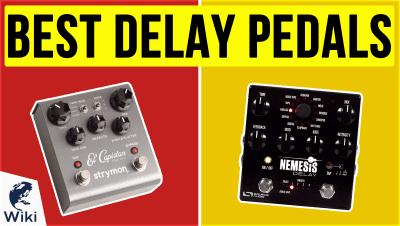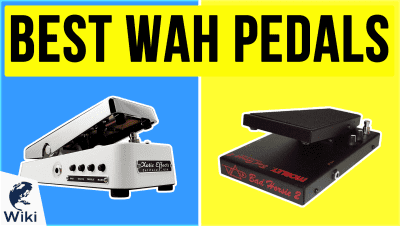The 10 Best Overdrive Pedals

This wiki has been updated 43 times since it was first published in May of 2016. If you are looking to get a more distinctive or aggressive sound from your guitar, take a look at these overdrive pedals, which take your original tone and push it harder. Many of today's models can replicate the warmth of a classic valve, and we have assembled a selection that offers a range of sound capabilities, affordability, and versatility. When users buy our independently chosen editorial recommendations, we may earn commissions to help fund the Wiki.
Editor's Notes
January 20, 2020:
There continues to be a massive influx of pedals from upstart companies designing simple circuits and outsourcing their construction to cheap labor markets. We do our best to avoid adding those to our rankings, preferring brands with a bit of heritage you can rely on. One of those brands was still removed from our list, however, and this was a painful consideration to make. I've been an Electro-Harmonix fanboy since I was 15. I've owned some half dozen of their pedals, and still rely on their Cathedral reverb and Memory Man delay on a daily basis.
Still, it was their Soul Food pedal that ended up on the chopping block today, mainly due to the fact that volume, drive, and treble controls just aren't enough to compete with the more comprehensive pedals that are available from equally reliable companies. In its place we brought on the JHS Bonsai 9-Way Screamer, which basically brings you a Tube Screamer and eight other iconic overdrive and distortion sounds, each with its own signal pathway. We also looked to the boutique market for some additional options, which you'll find in out special honors section.
Special Honors
Strymon Sunset Each of the channels offered on this model can be used independently, or can be combined to create a significantly chunky boost. Its Germanium diode circuitry is reliably built, and provides a smooth, warm tone that's ideal for classic rock and even certain styles of jazz. It is a little on the pricey side, but it's worth it for the versatility you get. strymon.net
Mythos Herculean V2 This model features something you might not see very often on others: a clarity knob. With it, you can adjust the character and cleanliness of your guitar's most unadulterated tone. Its top-mounted jacks allow for tight placement on a pedalboard, and its bass control offers more on the low end than almost anything else on the market. mythospedals.com
Foxpedal Kingdom Combo V2 This is a versatile option that provides users with a reliable MOSFET boost they can use to drive their tube amps to natural rumble, as well as a channel that clips the tops of the waveform to create a warm distortion of its own. Its focus knob acts as a kind of surrogate EQ, amplifying a specific frequency range depending on where you set it. foxpedal.com
What To Look For In An Overdrive Pedal
If remembering the specific positioning of up to six knobs for every song in a set sounds mind-boggling, look for an overdrive pedal with presets.
Thanks to the numerous manufacturers on the market today, choosing an overdrive pedal can be difficult. Every brand will say theirs is the greatest, but if it does not fit your specific needs, it will not be the best pick. The difference between a good effect and a bad one can mean the difference between playing music and making noise, so it is important to choose wisely.
When looking for an overdrive pedal, it is important to understand the level of control the user desires to have with their equipment. Most pedals offer volume, tone, and drive knobs to control the color and effect of the sound coming out of the amplifier. Other models will take it a step further and allow the musician to boost or eliminate treble, middle, or bass frequencies as well.
This control can also translate to increased functionality. The knobs on some pedals allow for the effect to go from a warm, true boosted sound to a grungy distortion with just the turn of a knob. Instead of requiring multiple pedals and an intricate signal path to create specific sounds, some musicians can create these same sounds from various tweaks on a pedalboard.
It is also important to consider whether the overdrive pedal needs to be a true bypass pedal or not. True bypass pedals do not color or change the signal chain in any way when the pedal is not being used. The term itself has become somewhat of a music elitist's buzzword, but if signal colorization is important to avoid because of studio levels or other songs played very clean, look for a true-bypass pedal.
For the uncertain or newbie musician, there are even overdrive pedals which have presets built into them. If remembering the specific positioning of up to six knobs for every song in a set sounds mind-boggling, look for an overdrive pedal with presets. These allows the musician to focus more on playing the instrument rather than just tweaking it with effects.
For the nostalgic guitarist, there are even some overdrive pedals specifically designed to emulate the tones of rather famous guitar amps. As the world of audio customization is vast, knowing what you want makes all the difference.
The Creation Of The Overdrive Pedal
With the invention of the electric guitar came the ability to manipulate its sound. This was not necessarily a new feature, as guitarists always sought to create unique and original sounds. It was unique in that with the electric guitar they had the ability to do so now more than ever.
This was not necessarily a new feature, as guitarists always sought to create unique and original sounds.
One man's individual style paved the way for overdrive and distortion for years to come. Junior Bernard started experimenting with creating a dirty blues sound by attaching a humbucker pickup to a small amp and overdriving its capacity. This created a louder sound and gave the signal a more rounded tone.
This directly influenced popular guitarists such as Buddy Guy and Elmore James, who were always looking for ways to recreate the soul of Chicago Blues in their music. Guitarists would deliberately increase the gain on their amps to create warm, distorted sounds. Chuck Berry would bring this overdriven amp sound mainstream in the 1950s with his iconic song Maybellene.
The early amps were much more delicate and prone to damage than modern amps are. Because of this, these damaged amps would produce distorted noises. Some guitarists began to experiment with these noises, to the point that damaged amps became a desirable thing.
Rather than seek out damaged amps or damage their own, individuals began making circuits which did this same function. The first known use of an effects box of this kind was when Red Rhodes offered the band The Ventures a small fuzz box, designed to recreate this warm fuzzy distortion. This marked the creation of the fuzz pedal, overdrive pedal, and distortion pedal, which all branched out from this device.
What Is The Difference Between An Overdrive Pedal And A Distortion Pedal?
When first discovering the world of musical effects, it can be intimidating to look at a seemingly endless catalog of effects pedals and decide which is the best for specific needs. This is especially true when it comes to overdrive pedals.
Overdrive pedals are gain-based effects pedals, in the same class as distortion pedals. In fact, these terms are sometimes used interchangeably to describe the effect they add to a guitar's signal. Each effect pedal changes the sound in a different way, and it is important to understand these differences.
This distorts the waves and creates the warm and crunchy sound musicians like.
The general effect of these two pedals is to increase the signal strength of the instrument to the point where it cannot be reproduced exactly as it went in. The term distortion is loosely applied to any pedal which does this, but this requires clarification.
An overdrive pedal is designed to either generate so much signal in a tube amp that the circuitry is overloaded and the signal gets cut, or to mimic this effect in a non-tube amp. As the circuitry of audio amplifiers is already complex as it is, so most manufacturers choose to keep most effects as after-market products. The overdrive effect usually incorporates both the function of a fuzz pedal and the function of a distortion pedal as well, but not to the extent that pedals designed to generate these sounds are.
When amplifiers are overdriven in this manner, the signal gets clipped as the amp tries to deliver a current beyond its capabilities. This distorts the waves and creates the warm and crunchy sound musicians like. As this clipping can cause the amplifier to output more power than intended, this can actually damage or destroy speakers. This is one reason why the pedals were created. Overdrive pedals allow the user to simulate this effect without destroying their amps.
On the other hand, distortion effects pedals are designed to do just that – distort the sound created through the input. This generally involves both boosting the signal like overdrive pedals do, and simultaneously altering the waves created by that signal. This creates additional noise around the input signal which changes the sound entirely.


